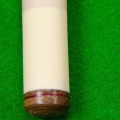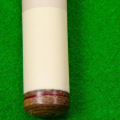There is usually no specific signal tip that all professionals use. Instead, their preferences for cleat tips differ, just as their playing skills are different. Many of them use what best suits them. A percentage use what they are sponsored with, so it can be difficult or soft.
They play for hours and are used to the hardness of the hard tip. For those on a budget, I suggest investing in a tip that is at least medium because it would take longer to form and you can save some money while the tip maintains its shape. Another factor that you should consider when choosing a tip is its use. Some players have clues with different tips for different uses.
Hard tips are generally used for strong or straight strikes. Medium tips are usually used for general play. And the soft tips are used for delicate shots that require more English. Professional players generally prefer soft cleats because they provide maximum control over the ball.
On the other hand, hard tips hold their shape longer and therefore require less maintenance. This is the most common cue tip and provides players with a good balance between control and consistency of the cue ball. Medium hard tips also require less maintenance than soft tips. Most beginner and intermediate players will benefit from the medium hard tip.
The 13mm tip is the most common tip among professional players. Maximum professional players recommend using a 13mm white tip for accurate shooting. Hard tips are better to break as they can withstand much more wear and tear, but you won't be able to get such a good answer in English with the cue ball. If you are stupid like me and try to break with a soft tip, it will easily deform and fungus will form, or it will have flat spots in the middle, which is just bad.
Medium offers you the best of both worlds and you won't have to worry about constantly changing the shape of your tip. And when you make the change, you'll have to adapt to a particular cue tip after understanding the strengths and weaknesses that each one offers. Chalk is used to restore friction to the tip of the cue so that it doesn't slide past the ball when you're shooting. Now let's take a closer look at the different types of cue tips and how they differ from each other.
At the same time, they know that another entry tip will not drastically change their game in one way or another. Predator victory tips are made by Predator Company; a company that has been in the market for the past 25 years. You can try different tips, find one you like and stick with it for a while until you try another one you like. This professional-grade cue tip is popular with professionals due to its bright color, which allows it to be used even in low light situations.
Understand all the factors that make professional taco tips help you figure out which taco tip option you should keep in mind. The shock absorbing and elastic effects of the cue also make it much easier to spin the ball to make trick shots when you're in trouble. Many professionals use the taco that is available during a particular match, as provided by the club or as part of a sponsorship agreement. If you haven't tried to use different cue tips, it may be a good idea to experiment until you find the right one for you.
But, when you play hard enough and you root your pool instinct, you start to get an idea of the different tips and cues. To give you an idea of what type of cue tip is best for you, let's take a closer look at the different cue tips and their advantages and disadvantages. .



